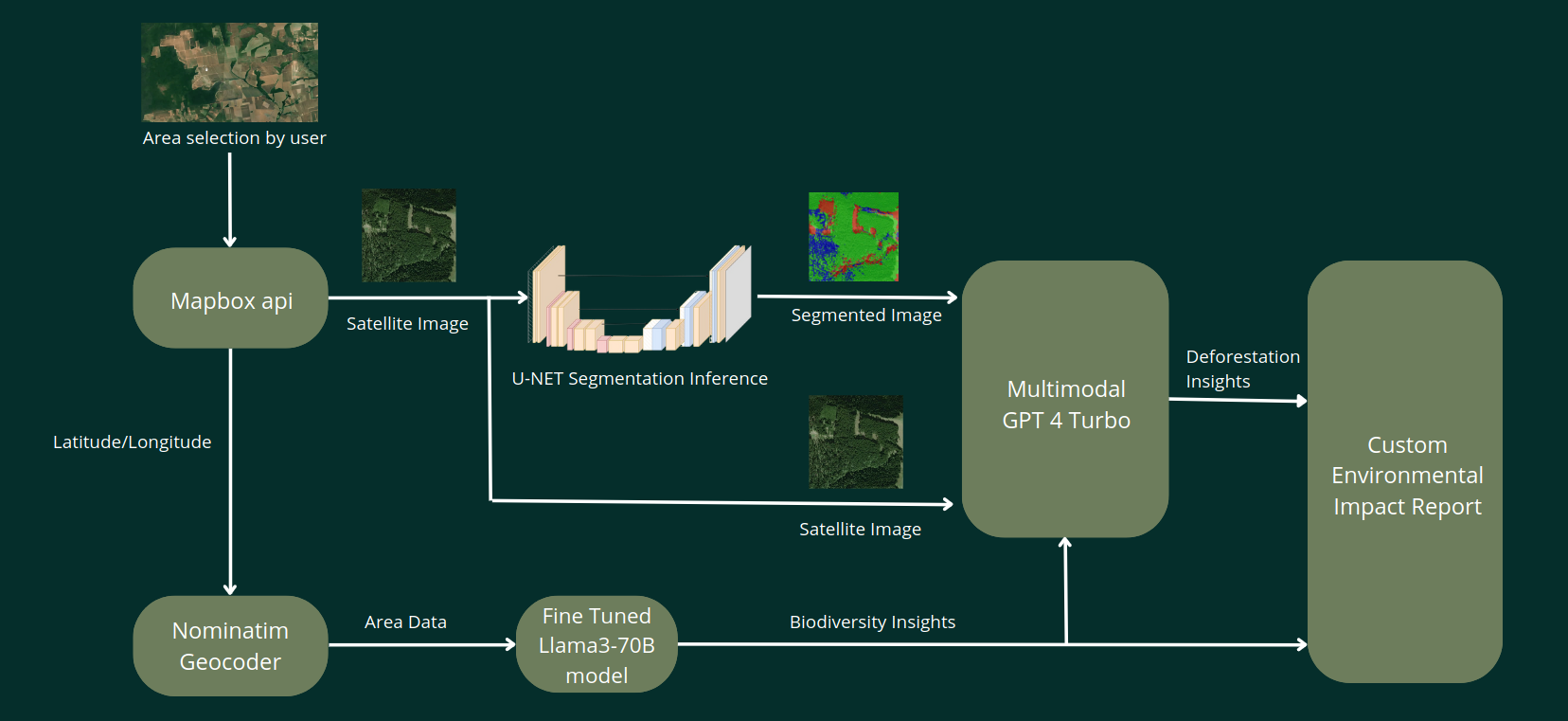TerraWatch is a proof of concept system developed during the TUM AI Hackathon 2024 to detect deforestation from satellite images and reason out the causes and potential environmental effects using computer vision models and multimodal large language models.
Below is the youtube demo:
Link to Full Video Demo on Youtube: Link
We used a traditional UNet to train the data on annotated sattelite images from Ukraine. The details of the segmentation model training and results will be uploaded soon.
The frontend is built using React with Elements UI. The necessary dependencies need to be installed using npm.
npm installTo start up the local frontend instance run the following command.
npm start-
Get your own API keys! Put them in
.env -
Create a virtual environment for example using
virtualenvand activate it
python -m virtualenv tum-ai
source tum-ai/bin/activate- Install all necessary dependencies into the newly created environment using pip
pip install -r requirements.txt- Start the local Flask API server using uvicorn
python -m uvicorn api:app --reloadThe API is now accessible through the following endpoints
GET /environmental-details/{latitude}/{longitude}
POST /deforestation
POST /segmentation-
Upgrade models: We would like to use ResUnet as it was observed that it achieves a faster training convergence desprite its high computational complexity. The residual connections present in its architecture facilitate information propagation and convergence speed. reference
-
Fine tune LLM models: The current LLM models have not been fine tuned and we would like to fine tune them based on available environmental datasets.

